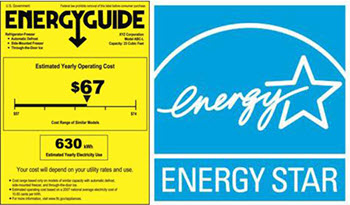CPS Energy’s offices and customer service centers will be closed on Wednesday, December 31, 2025 and Thursday, January 1, 2026, in observance of New Year's Day. We will reopen on Friday, January 2, at 7:45 AM. Although our call center will be closed for regular business, we remain open for customers to report natural gas or electric emergencies at any time by calling 210-353-HELP (4357) or 1-800-870-1006. Online services may be conveniently accessed through Manage My Account (MMA).
ENERGY STAR® and Energy Efficiency

Energy efficiency and energy conservation aren’t the same thing, but they share the goal of reducing energy use. Reducing your energy use saves you money. To maximize your savings opportunity, familiarize yourself with both energy efficiency and energy conservation.
How is energy efficiency different from energy conservation?
- Energy efficiency is using technology that requires less energy to perform the same function. It may require an investment or action. It usually requires planning ahead.
- Energy conservation is taking actions that reduce energy consumption. It may require a change in behavior with respect to activities that consume energy. Conservation can be done at any time.
Energy efficiency harnesses technology to use less energy for the same tasks. For example, energy-efficient LED light bulbs are able to produce the same amount of light as incandescent light bulbs but use 75 to 80 percent less electricity. Energy-efficient homes and buildings use less energy to heat, cool, and run appliances and electronics, and energy-efficient manufacturing facilities use less energy to produce goods.
How do you know which products or technologies are the most energy efficient? ENERGY STAR can help! ENERGY STAR is a voluntary rating system run by the US government that certifies appliances that meet a certain energy efficiency standard. Manufacturers apply for ENERGY STAR certification and the products are tested by the government to make sure they meet the performance criteria for certification. ENERGY STAR-certified appliances are available for most home equipment, such as televisions, water heaters, dishwashers, refrigerators, and more.
To learn more about energy conservation, visit here.